#African grey Habitat
Text
#african grey lifespan#african grey#tiktokparrot#africangrey#african grey parrot care#african grey behavior#african grey parrot lifespan in captivity#buying an african grey parrot#african grey parrot#cute birds#african grey adoption#african grey breeders#african grey care#African Grey chicks#African Grey conservation#African Grey cost#african grey food#African Grey for beginners#African Grey for families#African Grey for single owners#African grey Habitat#african grey Intelligence#African grey lifespan#african grey Mimicry#African Grey Parrot#african grey parrot adoption#african grey parrot as pets#African Grey Parrot aviary#african grey parrot behavior#african grey parrot breeding
0 notes
Text

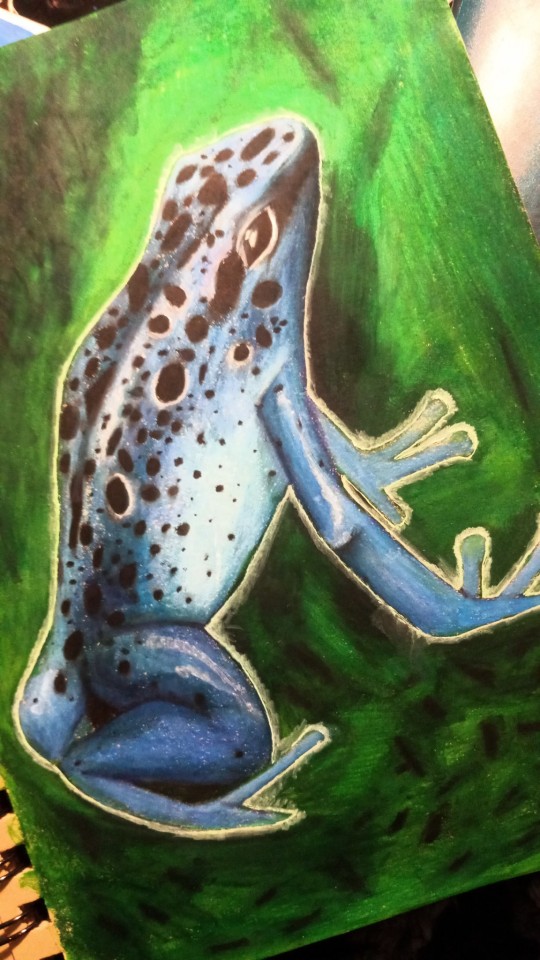
Afrian bull frog and poison dart
#no one ever sees my art when i post it here but i like these so i don't really care#the bullfrog was done first but it was actually way easier#for some reason its easier for me to capture a texture than a pattern#i kinda cant believe i drew these#i draw like 98 percent people but ive managed to do a few animals now that im been pretty happy with#thinking i might do a squirrel or something next#a red squirrel though because ive got for brown and red colored pencils than grey#art#my art#frogs#frog#poison dart frog#african bullfrog#animals#who doesnt love frogs though#i used to live next to a swamp when i was a little kid i used to build 'frog habitats' in one of those little green sandboxs
6 notes
·
View notes
Text



A Shoo-in Shoebill Stork
The shoebill stork, also known as the whalebill stork or Balaeniceps rex is in fact not a stork at all, but a long-legged wading bird belonging to the family Pelecaniformes. This species can be found in the central African tropics, from southern Sudan to northern Tanzania. Within this range, they mainly inhabit freshwater swamps and dense marshes, particularly those with deep water large reed beds.
Balaeniceps rex is often referred to as a dinosaur among birds due to its fearsome appearance. The average individual stands 1.1-1.4 m (3.6-4.5 ft) tall and has a wingspan of 2.3 to 2.6 m (7.5 to 8.5 in). However, adults are quite light, weighing only 4 to 7 kg (8.8 to 15.4 lb). Males tend to be larger than females, but otherwise the two sexes look identical. Adults have dark grey plumage with a lighter belly and darker wings. Their most striking feature is their beak, which is extremely large and can be said to resemble a wooden show (hence the name).
The shoebill's beak is very useful for catching its primary prey: fish. B. rex consumes a variety of species, including lungfish, catfish, and tilapia, as well as non-fish items like water snakes, frogs, turtles, mollusks, and even young crocodiles. Shoebills typically stalk their prey, or stand perfectly still and wait for their prey to come to them, before quickly snatching it up and decapitating it with the sharp edges of their beaks. Because of their large size and strong bills, adults are seldom prey for other animals, and they defend their nests fiercely from predators like snakes and other birds.
Outside of the breeding season-- and even during it-- shoebills are extremely territorial. Not only do they chase potential predators away from their nests, both males and females will fiercely defend their territory from other shoebills.
Breeding begins in the dry season, typically in in May, and lasts until about October. Once a male and female form a pair, they remain together for the duration of the mating season. They build a nest from floating vegetation, and 1-3 eggs are cared for by both parents; in addition to being incubated for warmth, one parent may also occasionally pour a beak-full of water over the eggs to keep them cool during the hot summer day. The eggs hatch about 30 days after being laid, and young are fed continuously-- though usually only one chick survives to adulthood. At 125 days old they become fully independent and leave to establish their own territories. The average individual can live up to 35 years in the wild.
Conservation status: The IUCN lists the whalebill stork as Vulnerable. Current wild population estimates sit at about 5,000-8,000 individuals. Primary threats include poaching for the zoo trade and consumption, habitat destruction, and pollution.
If you like what I do, consider leaving a tip or buying me a kofi!
Photos
Santiago Caballero Carrera
George Amato
Mana Meadows
#shoebill stork#Pelecaniformes#Balaenicipitidae#wading birds#birds#wetlands#wetland birds#freshwater fauna#freshwater birds#africa#central africa#animal facts#biology#zoology#ecology
167 notes
·
View notes
Text
My thoughts of the new Minecraft wolf variants!
With the recent announcement of the new wolf variants, I wanted to give my two bits about what real life animal each of the variants are based on! (I study animal ecology so I get excited when animals are depicted in anywhere)
The Pale Wolf, Black Wolf, Snowy Wolf, Ashen Wolf, and Woods Wolf
All of these wolf variants are based on the Grey Wolf (Canis lupus), whether it be the typical Plains Wolf (Canis lupus nubilus), or a different subspecies. The Grey Wolf is the most common wolf species found on the world, typically lives in packs of 4-9 members, and typically has 5 accepted subspecies in the science community - but in total has over 30 subspecies (determining subspecies can be tricky).

The Pale Wolf is specifically meant to represent a Plains Wolf, as this design has been representing the Grey Wolf in Minecraft for at least 12 years. The Taiga biome is one of the biomes where Grey Wolves can be found, making it a great place to find Pale Wolves in Minecraft.

The Black Wolf is not a subspecies, but rather a color variant of the Gray Wolf. The black coloring of their coats is not typically caused by melanism, but rather is a normal gene found in Grey Wolves. One of the causes of wolves having a black coat is due to the black gene being linked to higher immunity to canine distemper, meaning the black wolves that survive the virus are able to reproduce and pass on their black genes. Does this mean distemper exists in Minecraft? Probably not, but that's up to your interpretation.

The Snowy Wolf is based on the Arctic Wolf (Canis lupus arctos). Artic wolves' white coats help them blend into the snow to help them hunt prey, and to hide them from potential predators.
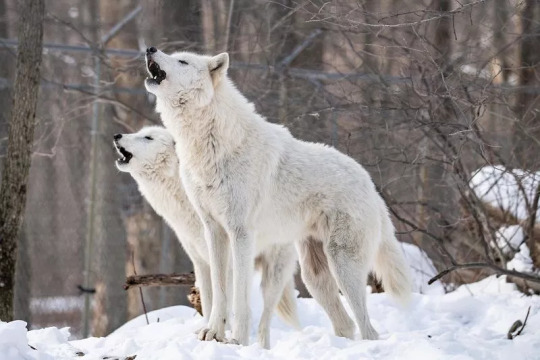
The Ashen Wolf is likely based on the Eurasian Wolf (Canis lupus lupus). The Eurasian wolf can have similar coloring to the plains wolf, but has also been found with greyer coloring along its back, tail, and upper legs and face, and with white on its cheeks, underbelly and lower legs.
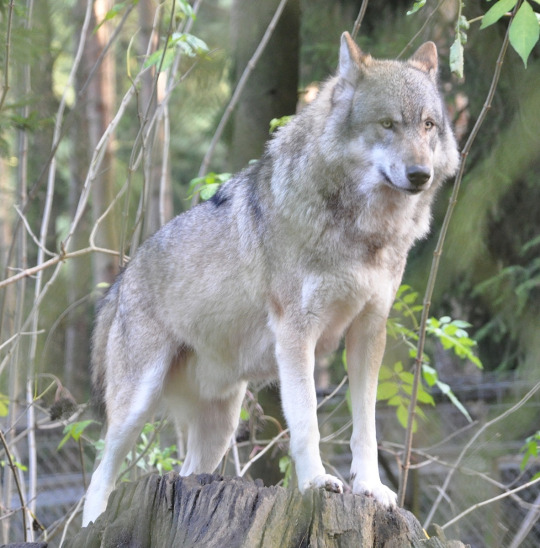
I think that the Woods Wolf is based on the Tibetan/Himalayan Wolf (Canis lupus chanco). It was a challenge to find what subspecies the woods wolf was based on because most wolves don't have the deep brown-orange coloring seen on the woods wolf, but the Tibetan/Himalayan wolf can often be seen with these colorings in the wild.
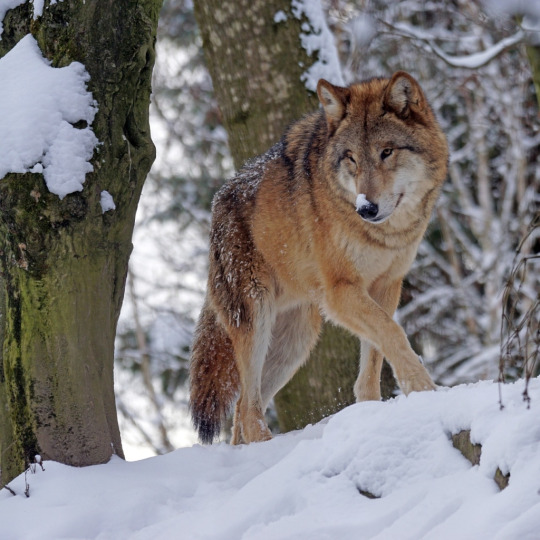
The Rusty Wolf
The Rusty Wolf is based on the Dhole (Cuon alpinus), also known as the Asiatic Wild Dog. Dholes have a rich tawny coat with a rich chocolatey tail. Unlike another popular red canine (the dingo), Dholes live in tropic forests, rainforests, and other habitats, making it an appropriate fit to be the jungle dwelling rusty wolf.

The Spotted Wolf
The Spotted Wolf is based on the African Wild Dog (Lycaon pictus), also known as the Painted Dog or the Cape Hunting Dog. This is variant is my favorite of the variants, and is one of my favorite canines of all time. African wild dogs live in savannah and grasslands biomes irl, and have beautiful coats ranging in different patterns of tawny, black, and white. I don't know if this is possible for Minecraft mechanics, but hopefully the spotted wolves will have different coat variants like their irl counterparts.

The Striped Wolf
The Striped Wolf is based on the Aardwolf (Proteles cristata), which is a species of hyena, making them felids instead of canids! (Yes, hyenas are more closely related to cats than dogs). Aardwolves can be found in semi-arid and open plains, making the badlands a good place to find them in-game. Fun fact! Aardwolves mainly eat termites/ants. Hopefully the striped wolf won't starve in a "bugless" game (rip fireflies).
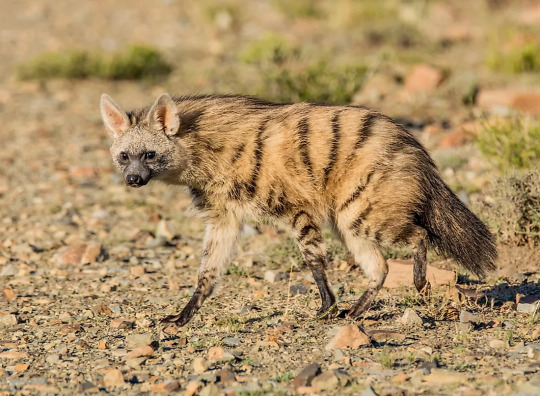
The Chestnut Wolf
This one frustrates me. I couldn't find a canine or canine adjacent animal that had even a similar coat pattern. This is not a wolf. It is a dog. Probably a Norwegian Elkhound.

#minecraft#minecraft wolf#minecraft wolves#wolf#wolves#grey wolf#dhole#african wild dog#aardwolf#norwegian elkhound#zoology#animal ecology
82 notes
·
View notes
Text
Here is my oc creation for the @goldenshrikecomic ! I was thinking about a southern savanna possibility for the world’s comic since I learned red deers lived in the north of Africa, and well I love african wild dogs so I ended up making a Stonekrovn variant ! Then I thought about adding antelopes to the mixt, but it didn’t really gave a satisfying result so I went with okapis instead (aka the cool horse giraffes).
I also made some other stuff for them (despite it not being accurate due to the fact that there is no mention of southern/hot lands) :
- habitat : savannas, oasis, rocky hills or mountains, plains (campsites are preferably in places surrounded by trees with decorations on them such as paints, clay, spider webs or strings also close enough to food for tribe members and halves)
- clothing (?) : bones, skulls, hides/pelts for cold nights, plants, paints, spider webs and collars
- inspiration (again) : red deer, african wild dog and okapi
- appearance : antlers can be black (very common), grey (very common), red, brown, yellow (rare) or white (rare), hooves can be black, grey, brown or pink (rare), eyes can be black (very common), grey (very common), brown (very common), red, orange, yellow or green (rare), the fur can be brown, red, beige or gold (rare) always with black spots and legs with white spots and stripes on the body. Males are the only ones to have a mane on the neck and little horns in front of their antlers, while females will have additional stripes on their backs, butt or tail (the position varies from one individual to another). The antlers are mostly supposed to look like a crown for the rhyme/ressemblance between krovn and crown.
- diet : omnivorous
- size : a bit smaller than a regular Stonekrovn but still quite big for a deer.
Here’s an example with a male (though not perfect) :
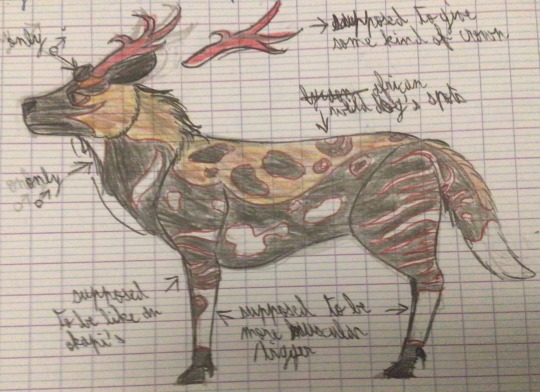
#deer#fantasy#comic#webcomic#oc#character species#character creation#fan oc#golden shrike#stonekrovn#red deer#african wild dog#okapi#savanna#animal variant
53 notes
·
View notes
Text
Snails — info page 🐌🌿
A snail is a shelled GASTROPOD – large taxonomic class of invertebrates within the phylum mollusca and gastropeda – that includes land snails, sea snails, and freshwater snails. They are typically nocturnal and are hermaphrodites, meaning they have both male and female genitals/reproductive organs.

🌿Anatomy
A typical shell is calcareous - mostly composed of calcium carbonate - and is coiled into a spiralled pattern (the number of spirals depend on the type of snail).
The body consists of: the visceral lump, mantle, head, foot, and antennae. It is attached to the shell by one (or multiple) columellar muscle.
Visceral lump -> holds excretory, digestive, reproductive, and respiratory systems
Mantle -> for respiratory function and water balance
Head -> has one or two pairs of antennae and a mouth
Foot -> for movement and digging to lay eggs
Antennae -> for orientation and detecting scents

Diet🌿
A general diet of a snail consists of fruits, such as berries, vegetables like cucumber and lettuce, and leaves, bark, grass, and stems - a good source of calcium is good too!
Snails are omnivorous and also detritivorous, meaning they can feed on decaying waste too.

🌿Garden Snails
One of, or the most, popular type of snail is the garden snail. Garden snails are a species of land snail in the family HELICIDAE. A typical lifespan is around 2-5 years with diet and habitat needs met.
Their DIET is stems, leaves, lettuce, cucumber, bark, and berries. They can also eat crushed egg shells & other sources of calcium to protect their shells, lay eggs, and help with muscle contraction.
Their HABITAT is usually an undisturbed area with moisture and good water + food supply, like forests, wetlands, old fields, and gardens.
Characteristics:
Thick shell -> 4-5 whorls (spirals) + pale brown, brown, or yellow with dark spiral bands
Mouth -> large with a thickened white lip
Body -> brown-grey colour
As Pets:
- provide correct foods + water supply (a water bowl that isn’t too deep or none at all, spraying water inside the enclosure is fine)
- use dechlorinated water to spray inside their enclosure to keep moist
- wash hands before + after handling to prevent dehydration and possible disease spreading (handling isn’t always recommended/encouraged)
- clean soil/substrate (that has no pesticides) every 1-2 weeks

Giant African Land Snails🌿
Another well-known type of snail is the Giant African Land Snail. Giant African Land Snails are a species of land snail in the family ACHATINIDAE. This species has been/is considered an invasive species. A typical lifespan is 3-6 years, but can go up to 10~, with diet and habitat needs met.
Their DIET is grass, cress, cucumber, lettuce, and cabbage. They can also eat crushed egg shells & other sources of calcium to protect their shells, lay eggs, and help with muscle contraction.
Their HABITAT is usually agricultural areas, forests, and/or wetlands. They are native to eastern Africa.
Characteristics:
Shell -> large; the size of an average adult fist (full size), it can reach to approx. 20cm in length + 10cm in diameter, brownish + dark vertical stripes
As Pets:
- provide correct foods + water supply (a water bowl that isn’t too deep or none at all, spraying water in the enclosure is fine)
- use dechlorinated water to spray inside their enclosure to keep moist
- wash hands before + after handling to prevent dehydration and possible disease spreading (handling isn’t always recommended/encouraged)
- clean soil/substrate (that has no pesticides) every 1-2 weeks

— Anything that can be removed, changed, or added, please let me know! —
🌿🐌🌱🐌☘️🐌🌱🐌🌿

27 notes
·
View notes
Text
What canine are the new wolf variants based of?
I am possibly wrong at points and also do not know every canine ever. Also an argument can be made that all of them bar Spotted and Stripped are based of natural variation of Grey wolves (or Coyotes). (But that makes a very dull post so where possible I will be avoiding them.)

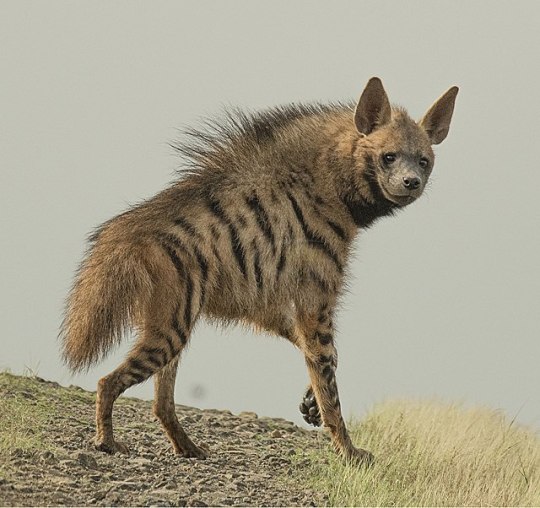
Stripped wolf: Wooded Badlands, Striped Hyena (Hyaena hyaena)


Spotted Wolf: Savanna Plateau, African Wild Dog (Lycaon pictus)

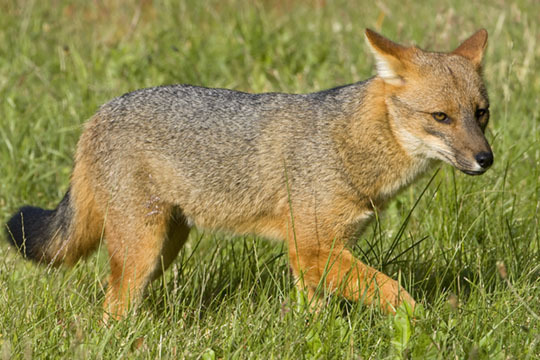
Woods Wolf: Snowy Taiga, Culpeo (Lycalopex culpaeus) Arguably too pale a brown.



Rusty Wolf: Sparse Jungle, Dhole (Cuon alpinus) (or Ethiopian Wolf (Canis simensis) which looks closer but the habitat is wrong)


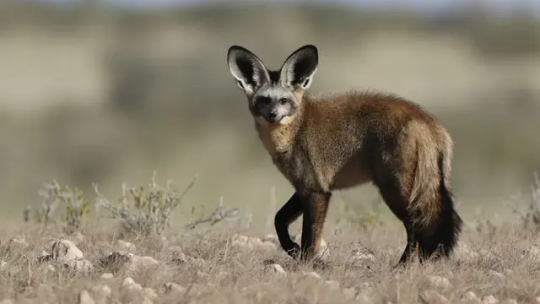
Chestnut Wolf: Old Growth Spruce Taiga, Side Stripped Jackel (Lupulella adustus) (or Bat Eared Fox (Otocyon megalotis))


Black Wolf, Old Growth Pine Taiga, Grey Wolf (Canis lupus)


Ashen Wolf: Snowy Taiga, Grey Wolf (Canis lupus)

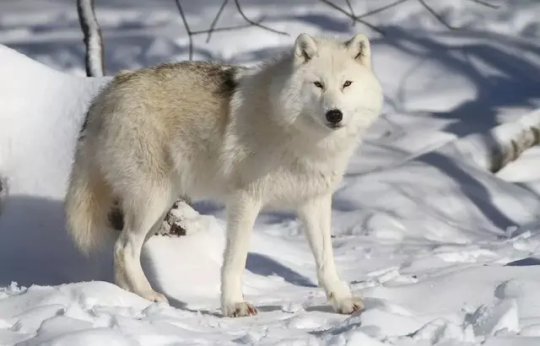
Snowy Wolf: Grove, Arctic Wolf (Canis lupus arctos) [Technically a subspecies of the grey wolf]
#minecraft#minecraft mobs#minecraft wolf#minecraft 1.20#Its an excuess to talk about caines:)#I love them#African wild dogs my beloved
52 notes
·
View notes
Text
So Minecraft has new wolves!!
I am very happy about this, but it does make me curious what species each variation is based off of! You too? Awesome!
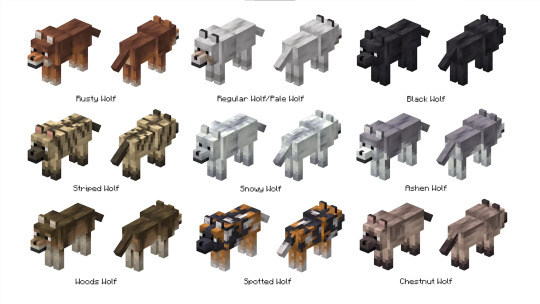
Rusty Wolf = Dhole



Seeing a little red jungle wolf took me right back to reading The Jungle Book as a kid, so I pretty much instantly decided they were dholes! A.k.a. Asian wild dogs or red dogs. They're an endangered canid native to Central, South, East and Southeast Asia, and they live in large clans ranging from 12-40 members.
Pale (Original) Wolf & Black Wolf = Grey Wolves
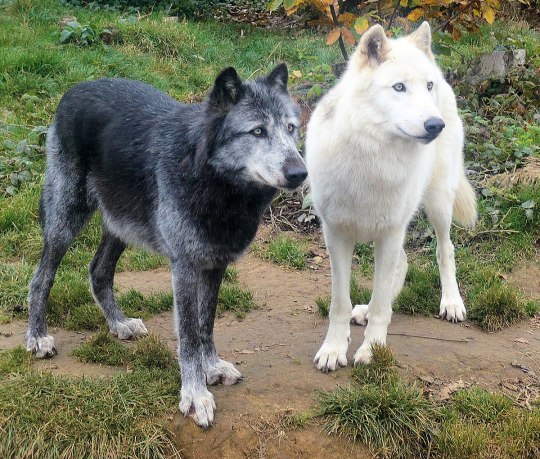
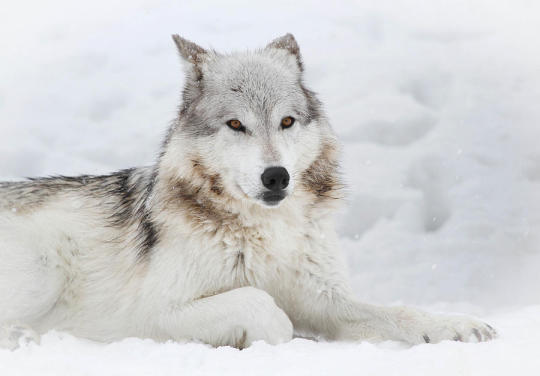
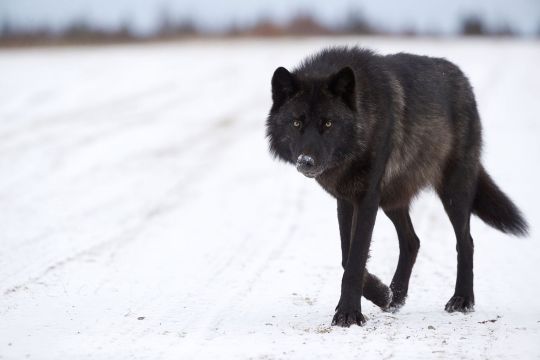
Our familiar friends have probably always been North American grey wolves, just pales ones! Despite their name, this iconic member of the canid family has an incredible amount of variation, and different subspecies of them are scattered all over North America.
Striped Wolf = Aardwolf
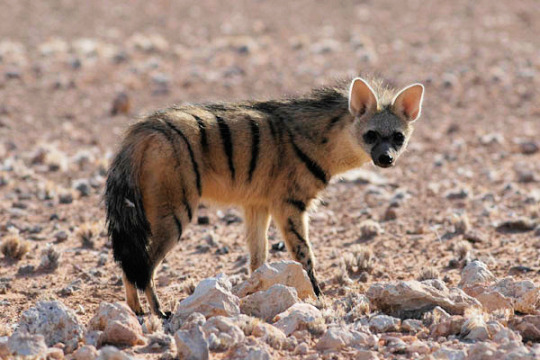
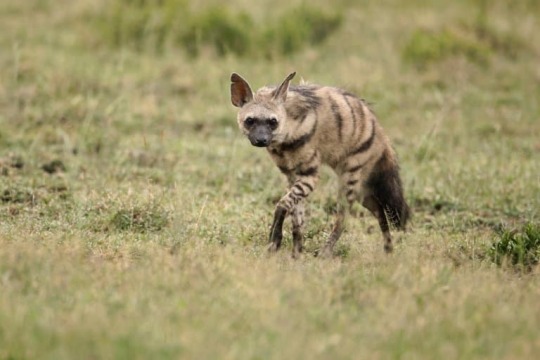
Okay, this is interesting, because they are definitely aardwolves! However, despite their names, aardwolves are actually the tiniest member of the hyaenidae family! Native to East and Southern Africa, they are exclusively insectivores and are known for following aardvarks to use their vacated burrows and foraging grounds. I think it's fascinating that a hyena was chosen for the wolf skins!
Snowy Wolf = Arctic Wolf

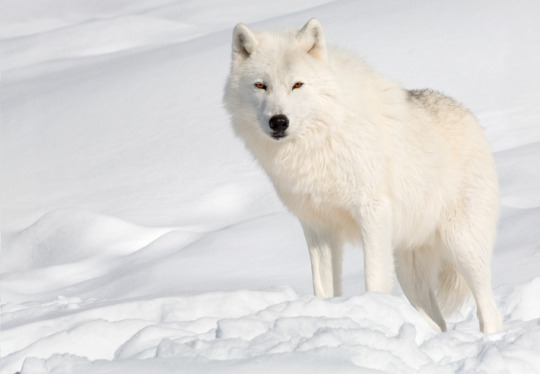
One of the many subspecies of gray wolves, arctic wolves are native to the Canadian Arctic and Alaska. Thanks to their territory being generally undesirable to humans, they are the only subspecies that can found across the entirety of their original range. Arctic wolves seem the most logical choice for snowy wolves, through there are several other pale-coated northern subspecies they could technically be.
Ashen Wolf = Northwestern Wolf


Speaking of northern subspecies, let's have some fun with the ashen variant. I'm pinning them as the Northwestern wolf, a.k.a. the Mackenzie Valley wolf! Native to, well, the northwestern part of Canada and Alaska, they are arguably the largest subspecies of wolf we know of. They match up pretty well with their Minecraft counterparts both in terms of habitat and possible coloration!
Woods Wolf = Eastern Wolf
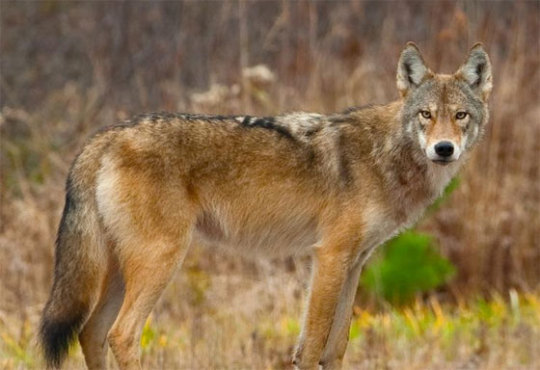
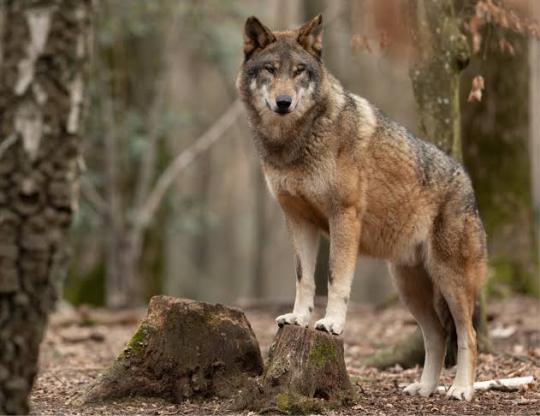
Ooo, okay, I went down a rabbit hole with this one! Eastern wolves, a.k.a Great Lakes wolves or Algonquin wolves, are native to the Great Lakes region of North America. They exist in an identification limbo, with no current ruling on whether they are a subspecies of grey wolf, red wolf, or their own unique branch that drifts closer to coyotes on the canid family tree. There is even some debate on whether the Great Lakes and Algonquin variants should be counted as the same subspecies, which I think is fascinating!
Spotted Wolf = African Wild Dog


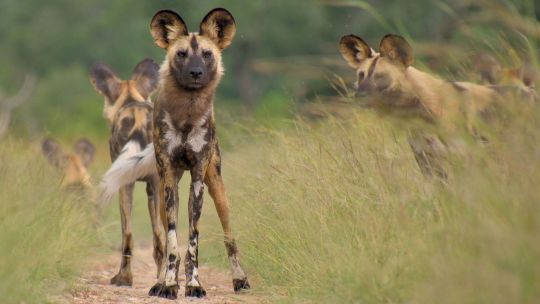
The more people who know these good bois exists, the happier I am. African wild dogs, a.k.a. painted dogs or Cape hunting dogs, are the largest wild canine in Africa. They live in packs of 5-30 members and are known their cooperative hunting tactics, using stamina to wear down prey. They're highly social animals, and you'll never find a lone dog.
Chestnut Wolf = Bat Eared Fox
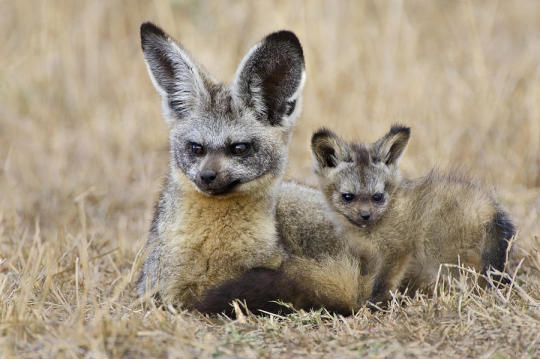
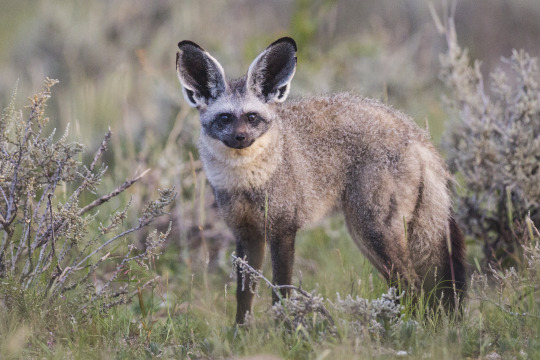
So, initially, I wrote off these guys cause I wasn't counting foxes, but I gave in. The chestnut wolves don't look like much of any existing canines, and nothing that lives in taiga forest. So, bat eared foxes are my best guess. They're small canids native to southern Africa, and are part of the subfamily Otocyoninae, which is a sister family to the families containing true foxes and racoon dogs.

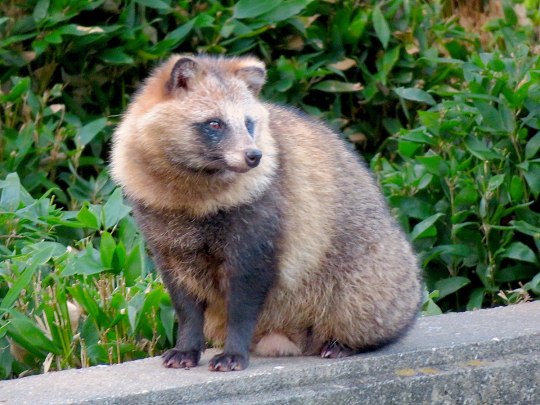
Speaking of raccoon dogs, they're my second best guess for the origin of the chestnut wolf. Their habitat makes slightly more sense, being from the forests of Japan and east Asia!
#i finally get to infodump on cool animals#also i learned A LOT researching for this!#minecraft#minecraft wolf#sharp has too many thoughts
25 notes
·
View notes
Text
Pyrophytes,
plants of fire. plants that Need fire (pyrophiles). disturbance is natural and good, as such so is fire (so are we) (it is about moderation and variation). destroyed patches make a mosaic of complex diversity.
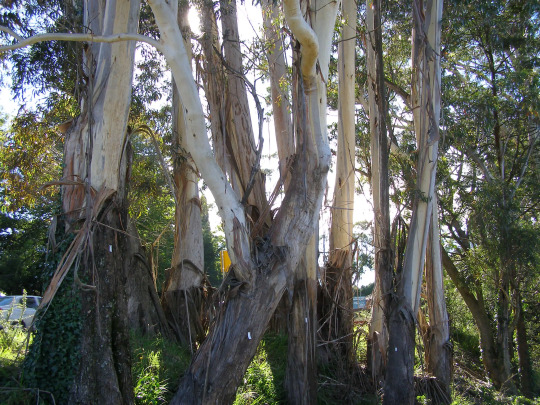
eucalyptus. Shaggy peeling bark + (toxic) oils = burns burns burns. explodes. but only fire can destroy the resin on their cones, so this is purposeful, they need it.

gorse. Very flammable. hot and dry (summer or fire) crisps and twists their pods to burst and spread their seeds.

Cyrtanthus ventricosus fire lily. Blooms right after fire, so it is the only place for pollinators to go, standing alone bright red and flourishing against stark white grey black ash,
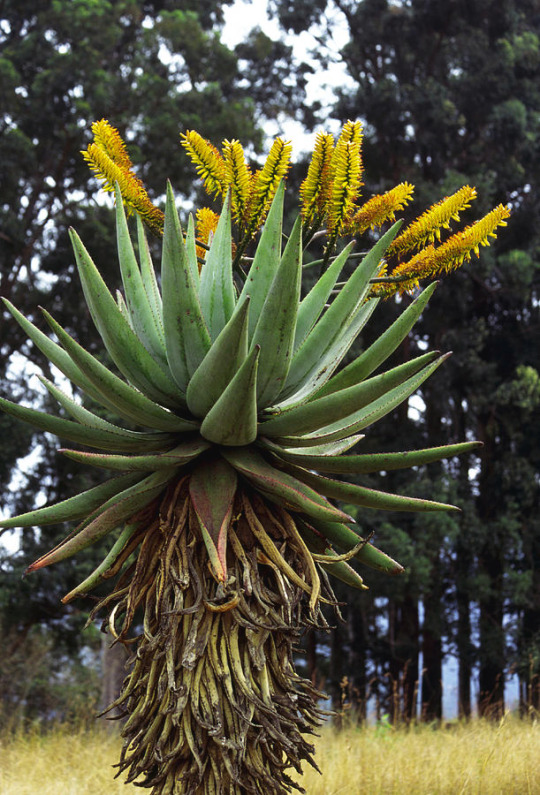
South African aloes with dead succulent leaves to wear as fire-armor.

longleaf pine that keep their branches safe out of fire’s reach,
and more. And more! Many, actually. Fire can protect these plants from invasives. Fire-maintained habitats of pyrophile plants defend themselves from invasives that get burned. stop the fires and the invasives can come in and wipe out plants therefore biomes therefore So Much, many of which are endangered (longleaf pine savanna at only 3% of its historical range...........)
#miaow#plants#ecology#botany#biology#conservation#prescribed fire#prescribed burn#forestry#forest management
103 notes
·
View notes
Text
Animals Poached for the Pet Trade
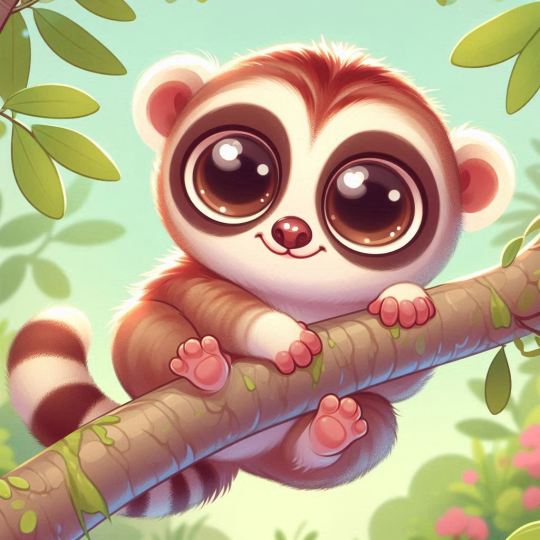
Several animals are poached to be sold as pets, including:
Parrots and Parakeets: Due to their vibrant colors and friendly nature, parrots and parakeets are highly sought after as pets. However, this popularity leads to poaching from the wild. African Grey Parrots and Amazon Parrots are particularly targeted due to high demand.
Squirrel Monkeys and Marmosets:
These small monkeys are popular pets because of their cute appearance and small size, but their wild populations are declining due to poaching.
Reptiles (Chameleons, Ball Pythons, etc.):
Rare reptiles are in high demand as pets, leading to poaching. For example, chameleons from Madagascar and Ball Pythons from Africa are often targeted.
Fennec Foxes:
Fennec foxes are popular pets due to their adorable appearance and small size. Unfortunately, they are poached from their natural habitats in the deserts of Africa.
Slow Loris:
Known for their big eyes and slow movements, slow lorises are popular pets, leading to poaching in Southeast Asia.
These animals are highly sought after as pets, but many species face declining populations in the wild and are at risk of extinction. To prevent poaching, it’s crucial to verify that any pet animal has been legally acquired before purchase.
2 notes
·
View notes
Text
#african grey#tiktokparrot#african grey lifespan#african grey parrot care#african grey behavior#buying an african grey parrot#africangrey#african grey parrot lifespan in captivity#african grey parrot#cute birds#african grey adoption#African Grey anxiety#African Grey as a pet#African Grey beak trim#african grey biting#African grey body language#african grey bonding#african grey care#African Grey clipped flight#African Grey clipping guide#african grey enrichment#African Grey escape prevention#African Grey flight#african grey food#African grey Habitat#african grey life#African grey lifespan#african grey Molting#African Grey Parrot#african grey parrot clipped wings
0 notes
Text

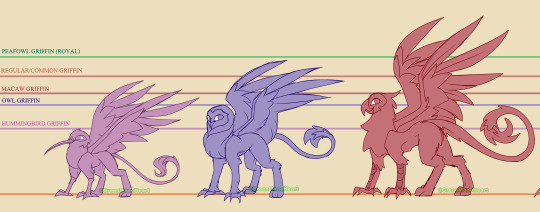

~Griffis Supspecies Height Comparison + Info~
------------------------------------
Just doing this for fun~
I made this so I can use this to design more griffins oc if I want to save time.
Also explaining the differences. Not just for these that I show here, also included for other bird species. Of course, I can't filled all in here. Just try and use common senses, if you can.
There's a few things that I explained based in my universe world, so, just want to make that clear.
If the pic is kinda hard to see here, you can view the full and close up image on DA: https://www.deviantart.com/greenmaneheart/art/Griffis-Supspecies-Height-Comparison-Info-in-des-978901373
I will explain more details of what features they had. have fun reading~
------------------------------------
Very small - HUMMINGBIRD
This also included other small bird species such as kingfisher, kookaburra, cockatiel, parakeet, parrotlet.
They have a certain natural ability based on what bird species they are; kingfisher griffins can catch fish. Kookaburra griffins can make loud and chaotic cry. And more.
Their small size makes it easy for them to fly swiftly or hide in small spaces.
------------------------------------
Medium small - OWL
This included all types of owl species out there.
They can fly without making a slightest sound of their wings flapping while flying.
Their common traits are usually quiet, watchful, sly and deep-thinkers. They seem more active hunting during night time, making them nocturnal creatures.
Owl griffins are considered as the calmest griffin compared to other subspecies griffins.
They are not usually aggressive and only do so when it's necessary like defending their home.
Despite also being considered as a predatory kind, they're pretty calm.
------------------------------------
Medium - MACAW
This included all types of macaw and medium-sized parrots species such as cockatoo, African grey parrot, scarlet macaw, black palm cockatoo and more.
Their habitats are usually in the jungle or rainforest.
Some have the ability to mimic sounds. Their special beak is for macaws, able to crack open any hard nuts easily, without any tools.
Their common traits can come in pretty friendly, intelligent, crafty and creative. They're considered as the smartest and creative subspecies of griffin.
------------------------------------
Large - NORMAL GRIFFIN
A common griffin, half eagle, half lion. However, this also included all types of eagle species, including hawk and falcons. Usually predatory birds.
This type of griffin has the biggest wingspan of all other griffins. A strong flier and the fastest flier than all other griffins.
They are also considered the strongest griffin subspecies.
They are also common subspecies and the most populated compare to other subspecies griffins.
Most of these griffins are very well known to hunt any certain food or animal easily.
------------------------------------
Medium Large - PEAFOWL
Male peacock griffins are usually a bit bigger than female peahen griffins.
However, this size can come from other types of bird such as Lyrebirds and birds of paradise.
Usually the royals are a bit bigger compared to it's average size.
Peafowl griffins are considered as the most beautiful creatures in Griffonia due to their unique pattern and colorful feathers.
Peacock griffin can fly but not as fast as other griffins. Peahen griffin cannot fly properly and can only glide.
Certain peafowl families will wear a certain gem on their forehead to easily identify their close relatives and family. This also to show off their beauty and high quality of themselves.
This has been going for many generations and now considered as their tradition.
Most peafowl are from the royal family. They live in a high ground place called The Proud Tree Kingdom.
They're usually very graceful, elegant, and well mannered. They always try to maintain their appearance to stay clean and beautiful to show that they are more superior than other griffins.
------------------------------------
Very tall and large - OSTRICH
Ostrich griffins are considered as the largest griffin subspecies.
They are also one of the griffins that cannot fly.
Females can have pale, pastel, whitish or brown color feathers, while males have dark coloring feathers.
However, as a normal ostrich would have, they're able to run fast compared to other griffins. Their highest speed limit is almost the same speed as the normal griffin's flying speed.
Most ostrich griffins participated in a racing sport game, and so were considered as professional racers.
These griffins can usually be found in many populations living somewhere in the desert western land, which is where the racing stadium for ostriches is located.
#base#bird#griffin#griffon#gryphon#macaw#ostrich#owl#referencesheet#refsheet#royal#griffonia#griffonoc#avian#fantasy#hummingbird#peacock#reference#heightcomparison#Description
13 notes
·
View notes
Text

African Forest Elephant (Loxodonta cyclotis)
Habitat & Distribution
Resides only in tropical rainforest
Native to West Africa and the Congo Basin, from Cameroon to the Democratic Republic of Congo
Physical Description
Weight: 4,000–7,000 kg (8,800–15,400 lb) for males, 2,000–4,000 kg (4,400–8,800 lb) for females
Height at shoulder: 2.4–3.0 m (7 ft 10 in – 9 ft 10 in) for males, 1.8–2.4 m (5 ft 11 in – 7 ft 10 in) for females
African forest elephants are grey all over; the skin is thick and wrinkled, especially around the joints
Both males and females have long, straight tusks which usually carry a pink tinge
Behaviour
Females travel in groups of up to 20, dominated by a matriarch, while bulls generally travel alone
Groups and lone bulls meet periodically at muddy watering holes, where they wallow, consume the mineral-rich sediment, and socialize
African forest elephants eat mainly leaves and tree bark, supplemented with fruits
They have few predators aside from humans
Key Advantages
The African forest elephant's sheer size allows it to trample smaller creatures
Adults can use their trunks and long tusks to defend themselves from predators
Photo by Jerome Delay
61 notes
·
View notes
Text
PARROTS FOR SALE ONLINE – HEALTHY EXOTIC BIRDS FOR SALE REPTILE STORE
PARROTS FOR SALE ONLINE
Live Parrots Pet Store is one of the largest Parrot Specie breeder reptile store and seller in the USA. We sell Parrots such as African Grey Parrots, Amazon Parrots, Macaw Parrots, Conure Parrots, Cockatoo Parrots, Pionus Parrots and Eclectus parrots for sale online. We are specialized in both hand raised baby Parrots and adult Parrots as well. Our pet store staff helps in the education of each customer and is here to assist any client that visits our pet store. We breed almost any parrot you can think of, from as small as parrotlet to as large as several species of Macaw. We want to be the #1 all Parrot pet store when anyone searches parrots for sale online and will work very hard to earn your business and support you in your ownership of your Parrot pet.
PARROTS FOR SALE – ALL LIVE AND HEALTHY PARROTS FOR SALE REPTILE STORE
We believe in weaning our baby birds based on their individual needs and rates of maturity. All baby parrots for sale online must get a good start in life, both nutritionally and psychologically. Each of our babies is given a hand-feeding formula that is best suited to their species and individual needs. They are given a variety of foods at an early age, which allows them to explore and experiment with different tastes and textures. Our babies are weaned onto a pelleted diet, various trail mix blends, fresh fruits and vegetables, cooked beans and rice, grains, breads, pastas, and nuts (for the Macaws & Conures).
BEST BIRD STORE ONLINE REPTILE STORE
Buy Parrots Online
We keep them in cages in our homes, but in their natural state, they are independent birds who can seek out water over hundreds of miles through pure instinct. We feed them seeds from a pet store, but they can find food in a wide variety of habitats. We give them plastic toys and mirrors to play with when in fact in the wild some have figured out how to use tools to communiparrote and attract mates. parrots for sale
#1 PARROT STORE ONLINE
Parrots For Sale Online
Welcome to Healthy Parrots For Sale Store. Your one stop online shop for the most adorable parrots you can find. We have a wide collection of these charming birds; we have several species available such as the amazon, african grey, electus, macaw etc. We also have parrot eggs for sale available on our store. All our parrots are super birds and in good health, vet checked and ready for adoption. They are properly trained and will make great home companions
Welcome To Our Parrot Pet Store – Healthy Parrots For Sale Online
The price of our Birds are very affordable every parrot lover can afford these birds. We are not out to make a profit but to find these birds the best home. The Live Parrots Shop has been breeding exotic birds since 1992 on their farm and specialize in importing and exporting birds from our Farms. Buy parrots for sale online here at floridareptiles.us
Keywords
parrots for sale, african grey parrots for sale, parrots for sale near me, parrots for sale uk,macaw parrots for sale uk, parrots for sale scotland, indian ringneck parrots for sale, baby parrots for sale, parrots for sale glasgow, parrots for sale in uk, pet parrots for sale, parrots for sale birmingham, parrots for sale london, african gray parrots for sale, grey parrots for sale, cheap african grey parrots for sale near me,talking parrots for sale near me, amazon parrots for sale uk, african grey parrots for sale scotland, parrots for sale manchester, talking parrots for sale uk, african grey parrots for sale uk, macaw parrots for sale, parrots for sale liverpool, parrots for sale sheffield, birds parrots for sale, parrot for sale, african grey parrot for sale, african grey parrot for sale uk, parrot for sale uk, talking parrot for sale, amazon parrot for sale, ringneck parrot for sale, macaw parrot for sale, alexandrine parrot for sale, parrot for sale glasgow, quaker parrot for sale, macaw parrot for sale uk, parrot for sale near me, electus parrot for sale, pet parrot for sale, talking parrot for sale uk, gray african parrot for sale, african gray parrot for sale, eclectus parrot for sale, grey parrot for sale, amazon parrot for sale uk, conure parrot for sale, parrot for sale liverpool, african grey parrot for sale scotland
Lizards For Sale
Lizards for Sale Reptile store
There are roughly 19 species of lizards that are native to Florida reptiles store in the geographically diverse state of the USA. Based on physical traits and appearance, four families of lizards are recognized in Florida. Reptiles of the family Crotaphytidae is typically recognized by their huge bodies and protracted tails. The Phrynosomatidae family, pet reptiles for sale in contrast, is distinguished by its diminutive size. The sizes of the third and fourth families, Scincidae and Teiidae, are not used to classify them but rather their morphologies.
Teiidae is very different from the other species. They are known as whiptails because of their long, sleek tails, bedding reptile cleaning and maintenance and their tongues are frequently forked. The lizard species of the Scincidae, however, best online reptile store have distinctly cylindrical bodies and very short limbs. Currently, you may purchase Florida lizards online from www.floridareptiles.us and benefit from our overnight shipping options. We at Florida Reptiles sell a variety of lizards, but some of the most popular ones include Abino iguanas, Yellow iguanas, Parsons Chameleons, and Grand Cayman Blue Iguanas, emerald tree boa for sale.
Snakes For Sale
Among many known reptiles of Florida, snakes are found in abundance. Around 30 species of snakes have been discovered throughout the state. While most of them are not poisonous, bidding starts on dec pm, Rattlesnake is a severely poisonous Florida reptile. There is no need for fear of encountering reptiles in Florida and visiting the wildlife with safety precautions well understood. pet reptile for sale
People find Snakes as one of the scariest reptiles; however, they play a great role in maintaining the ecosystem balance. We are reptile store have attempted to emulate good principles to take care of reptiles for sale. We have a wide selection of Florida snakes for sale. Florida snakes can be purchased online from us, and we guarantee safe and timely delivery. Some of the most frequently purchased Florida snakes include black devil boas, reptiles for sale including , baby red tail boas, pied ball pythons, underground reptiles and adult black green tree pythons. You can buy Florida snakes online in the United States from us and save money on different species of Florida snakes. captive bred reptiles for sale
Turtles For Sale
Turtles are typically regarded as being harmless among the terrifying and venomous reptiles of Florida. Among the native reptiles of Florida are five different species of turtle. The Western Painted Turtle, Snapping Turtle, Spiny Softshell Turtle, and Yellow Mud Turtle are the four aquatic and wetland species. The only species found on land is an elaborate box turtle. The largest of the five species, the spiny softshell, reptile shop near montclair nj is primarily found in eastern Colorado. Ornate box turtles have recently been categorized as threatened due to habitat loss.
Every week, they rescue and take in reptiles and amphibians in Florida before placing them up for adoption in a secure environment. Some of the most well-known Florida turtle species available for purchase online include the Spotted turtle, Baby Spotted turtles, Albino Red Ear Slider turtle, Baby Asian Yellow Pond turtle, and Baby Desert Ornate Box turtle. In the USA and Europe, Florida turtles can be purchased.
Every week, they rescue and take in reptiles and amphibians in Florida before placing them up for adoption in a secure environment. Some of the most well-known Florida turtle species available for purchase online include the Spotted turtle, Baby Spotted turtles, subsrate and bedding reptile cleaning , Albino Red Ear Slider turtle, Baby Asian Yellow Pond turtle, and Baby Desert Ornate Box turtle. In the USA and Europe, Florida turtles can be purchased.
Tortoises For Sale
Unlike turtles, tortoises are land creatures. Like turtles, tortoises are shielded from predators and the elements by a hard shell. With an estimated lifespan of 200,000 years, Florida tortoises are regarded to be the longest-living land animals in the entire world. Some of the tortoise species available for purchase are adult pancake tortoises, reptile shops in edison nj , young Aldabra tortoises, young Burmese black mountain tortoises, young big south African leopard tortoises, young Greek tortoises, young hypo Sulcata tortoises, and young elongated tortoises.
These and many other varieties of tortoise are available for purchase from us online.
With only a few mouse clicks, treats reptile subsrate and bedding captive bred reptiles for sale ,you may make the finest tortoise buy of your life with next-day delivery and enormous savings! Our enormous clientele is dispersed throughout the USA and Europe. Give us a chance to provide you with the best reptiles for sale online by ordering your Florida tortoise and other reptiles from the United States.
Are there rattlesnakes in Florida Reptile store?
Snakes are the most abundant species among all Florida reptiles. There are around thirty (30) snakes in Florida , out of which only three (03) are threats to human life. All three of these are rattlesnakes, and they come from the Viperidae family.
Their common names are Prairie Rattlesnake, Midget Faded Rattlesnake, and Massasauga. All three rattlesnakes are different in physical appearance and various characteristics; however, they possess a few mutual characteristics that help identify them. As the name suggests, the end of the tails look rattle-like, and they have triangle-shaped heads. The eyes are vertical in shape, and all have thick bodies.
Prairie Rattlesnake is the most common type of rattlesnake species. They are the largest among the other rattlesnakes and are known as Western Rattlesnakes and Great Plain Snakes. Among the snakes found in Colorado Springs, Prairie Rattlesnake is the only rattlesnake found there.
Midget-faded rattlesnakes are found in a limited number in Florida . Their only natural habitat is in the Green River and Florida River basins. Midget-faded rattlesnakes are generally called faded rattlesnakes due to their color and size. They have bodies the shade of pink and yellow with red scales and have darker markings all over, which fade as they age.
In addition to these venomous reptiles of Florida , two species of Massasauga Rattlesnake are also found in Southeastern Florida . These snakes include western massasaugas and desert massasaugas.
Snakes in Southeaster
n Florida inhabit relatively dry areas such as rocky terrains and dry grasslands. They are the shortest among the Florida rattlesnakes and can grow up to 20 inches in total. The color and appearance of both the snakes are pretty similar, with greyish and dull base color and dark patches all over the body. We sell a wide variety of Florida snakes online, and you can buy them directly from our live reptiles store.
Which species of reptiles and amphibians are there in Florida reptile store?
Florida is home to many native reptiles and amphibians. There are around 19 species of amphibians and around 58 species of reptiles currently known in the state.
Among the species of amphibians in Florida, the Western Tiger salamander is the only salamander species. It is well-recognized as it was designated as Colorado’s state symbol in 2012. They live around water bodies such as damp areas in forests and pine barrens.
Florida Tiger Salamander is a nocturnal species and can grow up to 14 inches. They eat everything from small insects to earthworms. Other amphibians in Florida include anurans, i.e., frogs and toads. Some of the frog species found commonly in Florida are American Bullfrog, Northern Leopard frog, Canyon Tree frog, etc. American Bullfrog is known as the biggest frog among these species. Florida toads include Great Plain Toad, Red Spotted Toad, etc.
Among the reptiles in Florida , lizards and snakes are found in abundance. There are around nineteen (19) species of lizards and thirty (30) species of snakes found across the Colorado state.
Lizards in Florida are categorically divided into four families. The list includes Texas Horned Lizard, Round-tail Horned Lizard, Tree Lizard, The Eastern Fence Lizard, etc. The most well-known species of snake found in the state is Rattlesnake.
Florida turtles and tortoises are found in the eastern part of Florida . Four out of five species found in the state are aquatic, and only one species, Ornate Box Turtle, is terrestrial. This terrestrial species has been marked as threatened species due to habitat loss in recent years. Contact us right away to take advantage of our special online discounts on our Florida reptiles store.
What kind of lizards are there in Florida Reptile store?
Among the Florida mountain reptiles, lizards are present in the majority population. There are around nineteen (19) species of lizards in Florida reptile store . These species are categorized into four (04) families on the basis of their size and shape.
The first family, called Family Crotaphytidae, consists of two species. Common names for these Florida reptiles are Collared Lizard and Longnose Leopard Lizard. The characteristics that define this family are large bodies with huge heads and long limbs.
The second family is Family Phrynosomatidae. There are nine species of lizards in this family, What is the best website to buy reptiles? and they are characterized based on their relatively small bodies. The common names are Texas Horned Lizards, Eastern Fence Lizard, Side-Blotched Lizard, Short-Horned Lizard, Desert Spiny Lizard, Tree Lizard, Lesser Earless Lizard, Sagebrush Lizard, and Round-tail Horned Lizard.
https://floridareptiles.us/wp-content/uploads/2023/05/A3.jpeg
https://floridareptiles.us/wp-content/uploads/2023/01/reptiles.jpg
Where Do We Ship Reptiles?
We ship Florida reptile Store in the United States and Europe. Our customer base stretches from the United States to Canada, the UK, and all of Europe. You can buy Florida reptiles online from our online store to take advantage of our special discounts for online customers. We have a diverse clientele that ranges from the United States to Europe. The Abino iguana, Parsons Chameleon, Black devil boa, Yellow iguana, reptile store near me , Grand Cayman blue iguana, Surname boa, Spotted turtle, Baby Spotted turtle, geckos for sale and Baby red tail boa is among our most popularly purchased Florida exotic pet reptiles.
2 notes
·
View notes
Note
I’m not sure if this had already been asked but if the guys were willing to adopt a bird as a pet with MC, what kind of bird would they prefer? And how would they react around the birb? 👀
Alexei - African Grey Parrot. He'd take excellent care of it, and would spend a lot of time teaching it words and such.
Brooklyn - Macaw. He would enjoy creating a habitat for it inside his mansion. I could also see him with canaries.
Leo - Budgie(s). They are bffs.
Milo - Green-cheeked conure. Takes the time to bond. A good bird dad.
Rory - Lovebirds. Remember this for the full game. He's very soft for the birbs.
Tobias - Cockatoo. Spends a lot of time with it. Would probably teach it bad words.
41 notes
·
View notes
Note
Do yu know what other animals were in ancient egypt? I want my oc to have a unique animal and you seem to know a fair amount

I am a well of ridiculous, hyperspecific, only interesting to some trivia lmao.
I would encourage you not to limit yourself to an entirely unique beast- many deities share sacred animals and are still strong individuals. My mind immediately goes to the huge number of feline deities- lions and lionesses in particular- for an example. Additionally, it's nigh impossible for me (with no academic anthropology/egyptology/historic zoology knowledge) to say for certain that particular animals were present in Kemet when they have no documented deities, mummies, or written mentions. I've had to guess for some, deduce by their present day habitats and more or less "timeline" of their species.
It's also important to keep in mind Kemet had contact with other civilizations in other habitats, meaning they were aware of animals not necessarily native to the area. A perfect example is the Hamadryas baboon- they were Nubian animals, but were sacred to both Thoth and Babi, depicted in art, and many mummies of the species have been recovered. A more surprising example is the Syrian brown bear, which was a rare exotic spectacle for the royal elite. There's also the trouble of many species now being extant from the area, meaning they were there but the local population is now extinct- the African sacred ibis is the example my mind comes to first, the waterfowl no longer present along the Nile.
Coincidentally, I've been compiling a list of animals for my own reference to supply a beast or two for the deities that don't have one in tradition.

Birds
Abdim's Stork
African Darter
African Dwarf Kingfisher
African Grass Owl
African Open-billed Stork
African Pied Wagtail
African Sacred Ibis
Asian Green Bee-Eater
Barbary Falcon
Barbary Partridge
Barn Owl
Barn Swallow
Bearded Vulture
Bennu Heron (likely not an actual animal, the Bennu bird inspired by the Goliath Heron- but felt like including it anyhow)
Black Kite
Black Stork
Black-throated Loon
Black-winged Kite
Brown-necked Raven
Carrion Crow
Cattle Egret
Chukar Partridge
Common Buzzard
Common Cormorant
Common Crane
Common Greenshank
Common House Martin
Common Kestrel
Common Kingfisher
Common Pochard
Common Quail
Common Raven
Common Redshank
Common Redstart
Common Sandpiper
Common Spoonbill
Common Teal
Crab Plover
Crested Plover
Dalmatian Pelican
Demoiselle Crane
Eagle (I'm sure there were some, but I can't find any definitive evidence of species in the ancient Kemetic culture- I would take a guess that the Golden Eage was an infrequent visitor)
Egyptian Plover
Egyptian Vulture
European Roller (considered a pest)
European Turtle-dove
Eurasian Coot
Eurasian Crag Martin
Eurasian Teal
Eurasian Wigeon
Fan-tailed Raven
Ferruginous Duck
Gadwall
Garganey
Glossy Ibis
Golden Oriole
Goliath Heron
Great Bittern
Great Bustard
Great Cormorant
Great Egret
Great Spotted Cuckoo
Great White Pelican
Greater Flamingo (possibly not native)
Green Sandpiper
Grey Heron
Griffon Vulture
Helmeted Guineafowl (not native)
Hermit Ibis
Hobby Falcon
Honey Buzzard
Hooded Crow
Hoopoe
Houbara Bustard
House Crow
House Sparrow (pest, hieroglyph had negative connotation)
Kittliz's Plover
Lanner Falcon
Lappet-faced Vulture
Laughing Dove
Lesser Kestrel
Lesser Pied Kingfisher
Little Bittern
Little Bustard
Little Egret
Little Owl
Long-eared Owl
Long-legged Buzzard
Mallard
Marabou Stork
Marsh Sandpiper
Masked Shrike
Merlin
Mourning Wheatear
Northern Lapwing
Northern Pintail
Northern Shoveler
Ostrich
Pale Crag Martin
Peregrine Falcon
Pied Avocet
Pink-backed Pelican
Purple Gallinule
Purple Heron
Red Kite
Red-backed Shrike
Red-footed Falcon
Red-rumped Wheatear
Reed Cormorant
Ring-necked Dove
Rock Dove
Rook
Ruddy Shelduck
Saddle-bill Stork
Saker Falcon
Sandhill Crane
Sand Martin
Sand Partridge
Short-eared Owl
Spotted Redshank
Sooty Falcon
Squacco Heron
Striated Heron
Swan (not native)
Tawny Owl
Tufted Duck
Western Reef Heron
White-backed Night Heron
White-crowned Wheatear
White Stork
White Wagtail
Wood Sandpiper
Yellow-billed Stork
Mammals
Aardvark (possibly not native)
Aardwolf
Addax Antelope
African Clawless Otter
African Giant Shrew
African Green Monkey (not native)
African Grass Rat
African Leopard
African Striped Weasel
Arabian Oryx
Barbary Deer (not native)
Barbary Lion (now extinct)
Barbary Macaque (not native)
Black Rat
Common Patas Monkey (not native)
Black Rhinoceros
Blanford's Fox
Black Wildebeest
Bubal Hartebeest (now extinct)
Cairo Spiny Mouse
Cape Hare
Caracal
Cheetah
Common Beisa Oryx
Common Genet
Desert Hedgehog
Desert Long-eared Bat
Dorcas Gazelle
Desert Black Cobra
Egyptian Fruit Bat
Egyptian Jackal/African Wolf (originally misidentified, now the African Wolf)
Egyptian Mongoose
Egyptian Pipistrelle
Egyptian Red Fox
Egyptian Slit-faced Bat
Egyptian Tomb Bat
Egyptian Weasel
Egyptian Wild Ass
Fennec Fox
Flower's Shrew
Four-toed Jerboa
Geoffroy's Horseshoe Bat
Gerenuk
Giraffe
Golden Spiny Mouse
Greater Egyptian Jerboa
Greater Mouse-tailed Bat
Greater Red Musk Shrew
Hamadryas Baboon (not native)
Hippopotamus
Honey Badger
House Mouse
Lesser Egyptian Jerboa
Lesser Mouse-tailed Bat
Long-eared Hedgehog
Long-nosed Shrew
North African/Bush Elephant (vilified and driven out by prehistoric Egyptians)
North African Crested Porcupine (not native)
Nubian Ibex (not native)
Olive Baboon (likely not native, sometimes called the Anubis Baboon)
Persian Fallow Deer (not native)
Rhim Gazelle
Rüppell's Fox
Sand Rat
Serval (likely not native, but Ra was depicted as one)
Scimitar Oryx
Soemmerring's Gazelle
Somali Dwarf Shrew
Spotted Hyena
Spotted-necked Otter
Striped Hyena
Syrian Brown Bear (not native)
Wild Boar
White Rhinoceros
Yellow Baboon (not native, species' epithet means 'dog-head' in Greek)
Vervet Monkey
Reptiles
African Chameleon
African Rock Python
Arabian Horned Viper
Desert Horned Viper
Desert Monitor Lizard
Egyptian Cobra
Egyptian Gecko
Egyptian Sand Boa
Egyptian Sand Racer
Egyptian Tortoise
Javelin Sand Boa
Insects/Arachnids/Etc.
Nile Crocodile
Nile Soft-shelled Turtle
Red Spitting Cobra
Saharan Sand Viper
Amphibians
African Common Toad
European Green Toad
Marsh Frog
Mascarene Grass Frog
Nile Delta Toad
Nile Valley Toad
Camel Spider
Banded Garden Spider
Brown Widow Spider
Carpenter Ant
Centipede
Click Beetle
Common Housefly (NOT considered a pest, actually revered as a protector)
Danaid Eggfly
Desert Ant
Desert Locust
Devil's Coach Horse Beetle
Dorippus Tiger Butterfly
Dragonfly
Flea
Fire Ant
Jewel Beetle
Gaudy Commodore Butterfly
Half-edged Wall Jumping Spider
Large Salmon Arab Butterfly
Maggot/Carrion Fly
Migratory Locust
Messor Ant
Millipede
Red-breasted Goose
Mosquito (pest)
Moths in the Saturniidae family
Palestine Yellow Scorpion
Pantropical Jumping Spider
Pharaoh Ant
Plain Tiger Butterfly
Praying Mantis
Scarab Beetle
Sinai Baton Blue Butterfly
Southern White Admiral Butterfly
Scorpions in the Buthidae and Scorpionidae families
Water Scorpion
Fish, Mollusks, etc. (Keep in mind fish were taboo in Kemet)
Abju
African Catfish
African Tigerfish
Bayad Fish
Blacktip Shark
Blue-spotted Stingray
Bolti
Chromis
Cichlid
Cornish Jack
Eel
Flatfish
Gilt-head Bream
Great Barracuda
Leopard Shark
Lepidotus Fish
Loligo Squid
Lungfish
Moon Fish
Mullet
Nile Barb
Nile Bichir
Nile Carp
Nile Mormyrid
Nile Labeo
Nile Perch
Nile Puffer
Parrotfish
Reef Manta Ray
Reef Shark
Sandbar Shark
Sea Snake
Scorpionfish
Spiny Lobster
Sturgeon
Surgeonfish
Swordfish
Thornback Ray
Thresher Shark
Tiger Shark
Tilapia
Triggerfish
Unicorn Fish
Wrasse
Zebra Shark
Domestic Animals
Bean Goose
Brant Goose
Camel (not introduced until Middle/New Kingdom)
Cats (Mau breed)
Chickens (not introduced until New Kingdom era)
Cow/Bull
Dogs (Saluki, Greyhound, Basenji, and Pharaoh Hound breeds)
Donkey
Egyptian Goose
Greater White-fronted Goose
Greylag Goose
Honey Bees
Horse (not introduced until New Kingdom)
Pig
Ram
My sources, if you're interested, are the Wikipedia page for Egyptian wildlife, a few different diving sites about the Mediterranean and Red Sea, a couple books I own on Ancient Egypt that describe the geography of the periods, and this lovely reddit multi-post
Sheep
15 notes
·
View notes